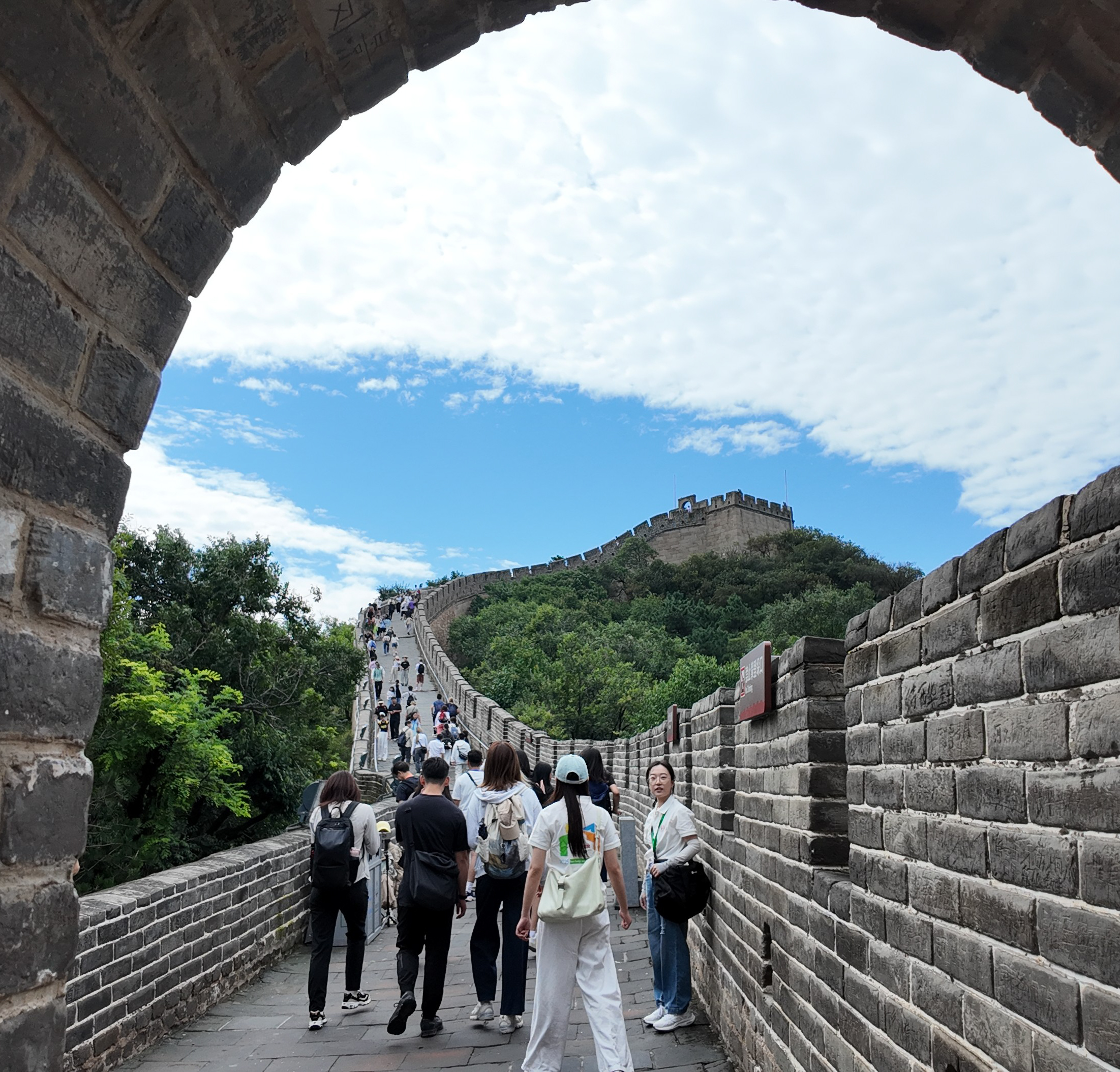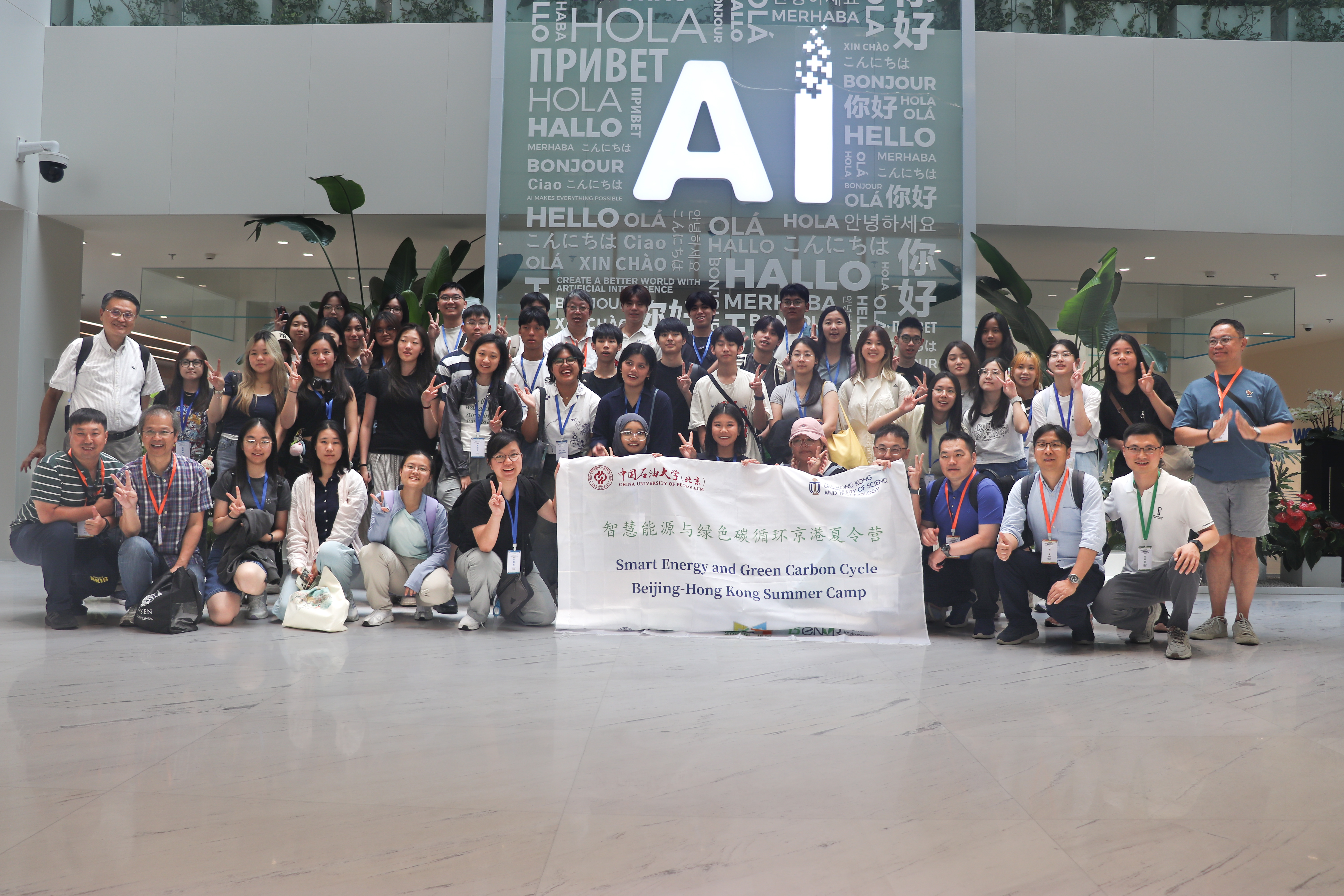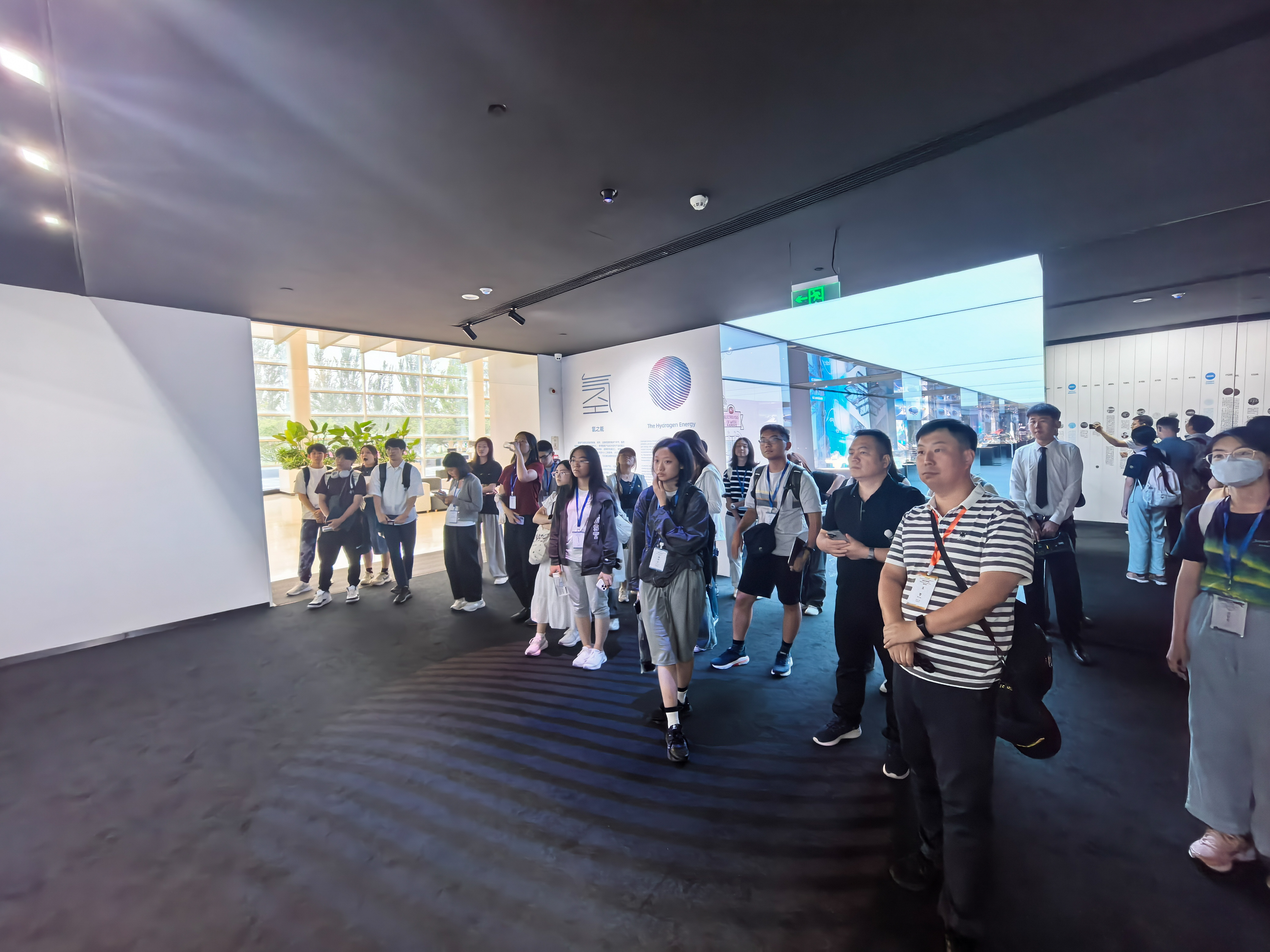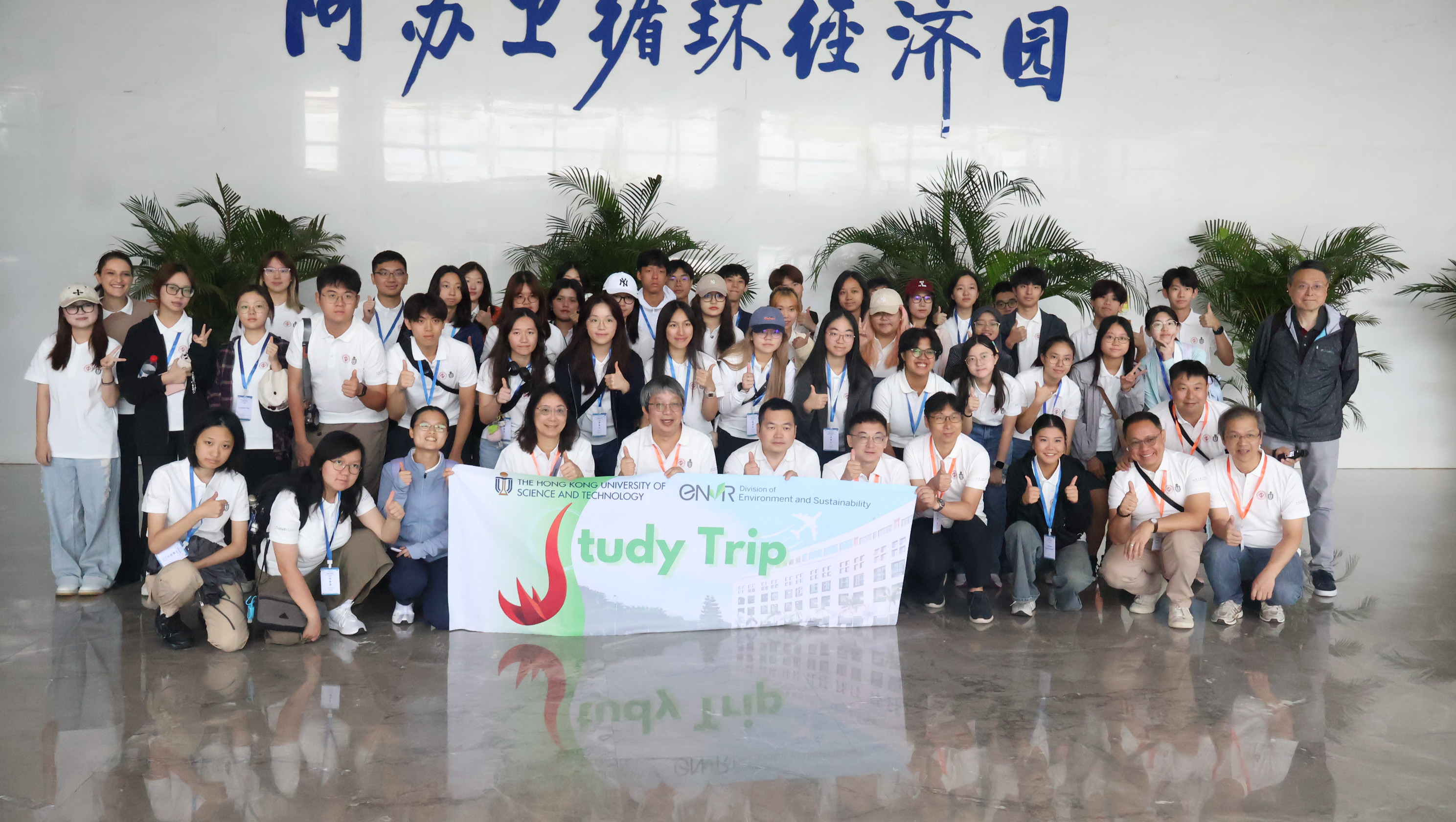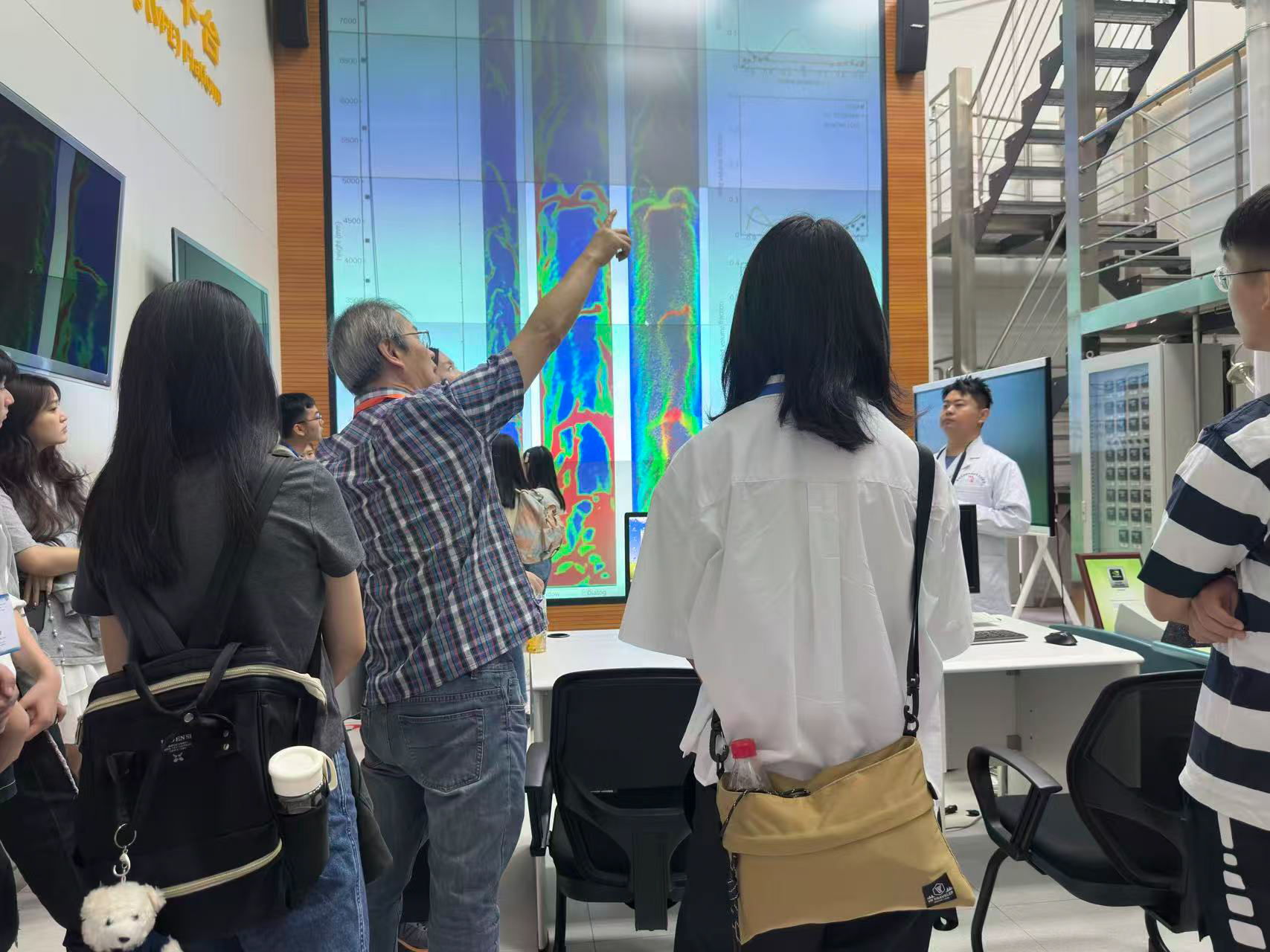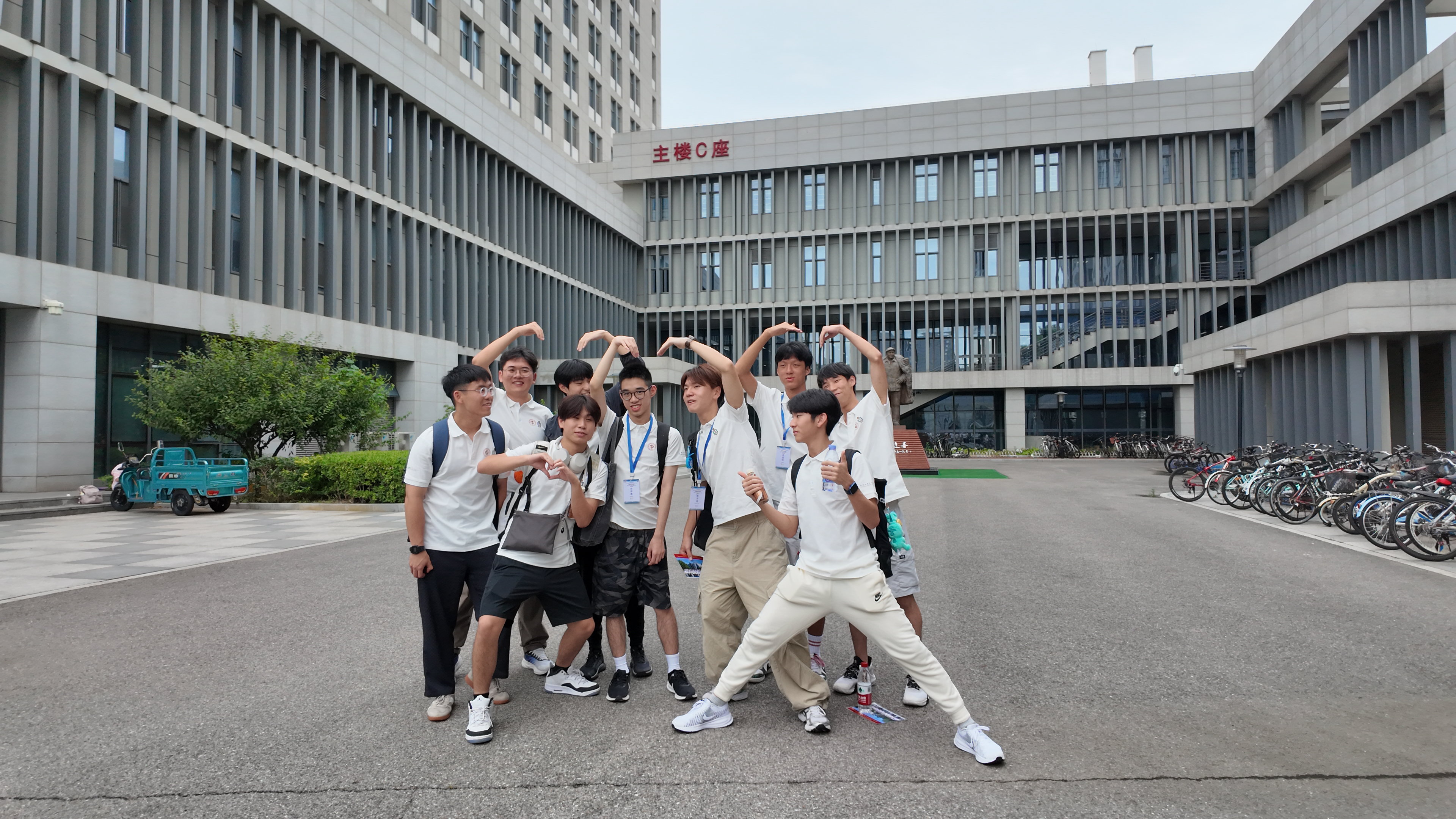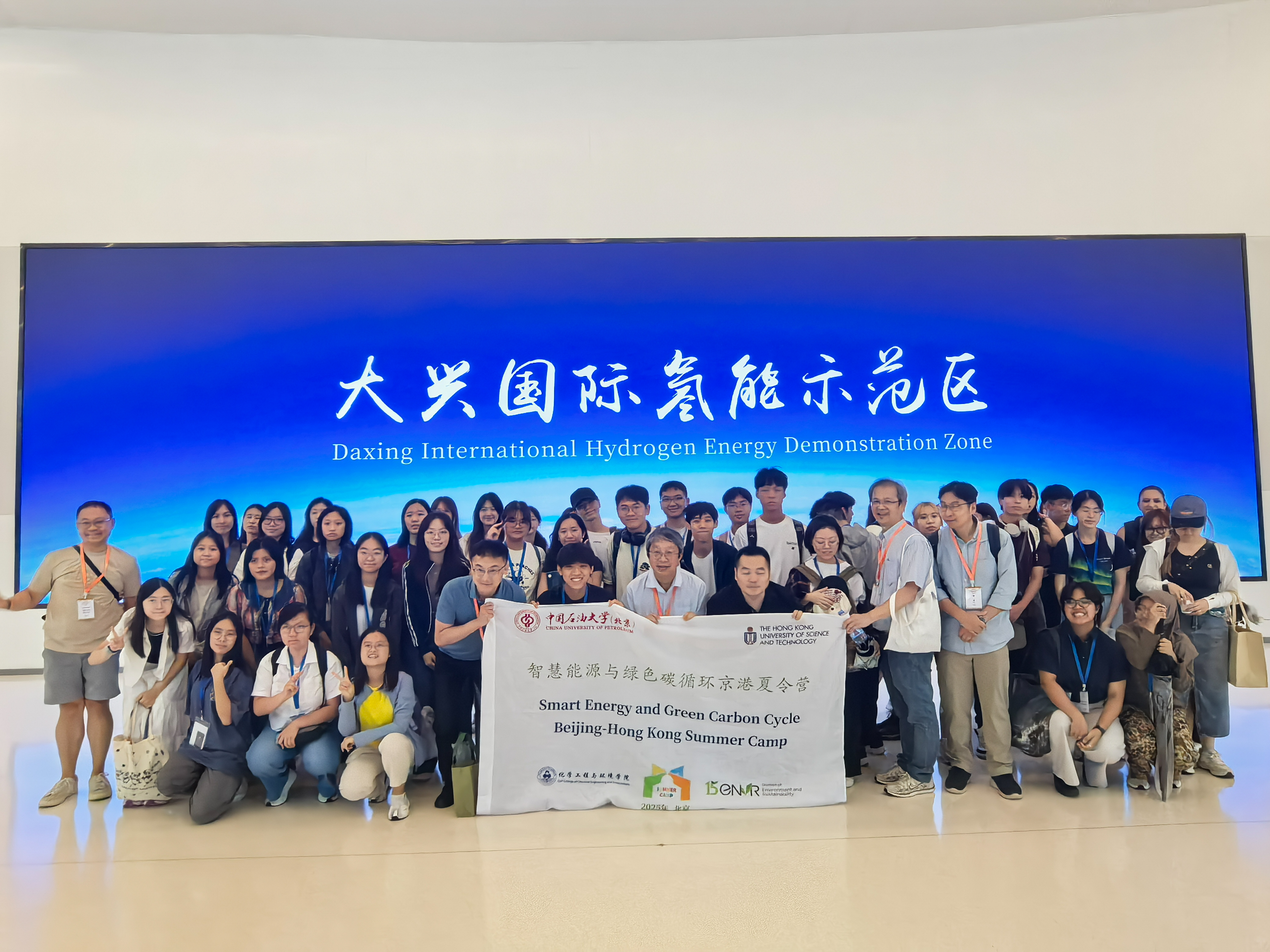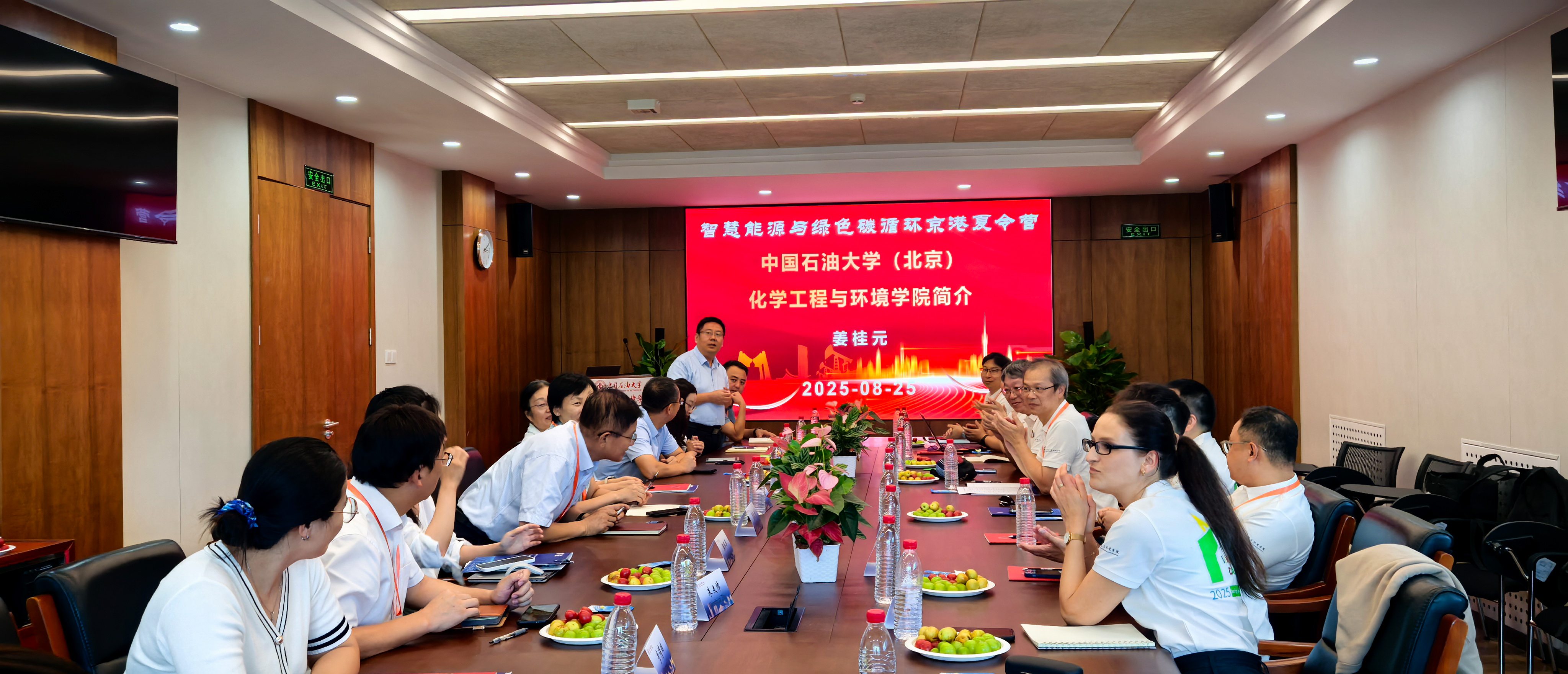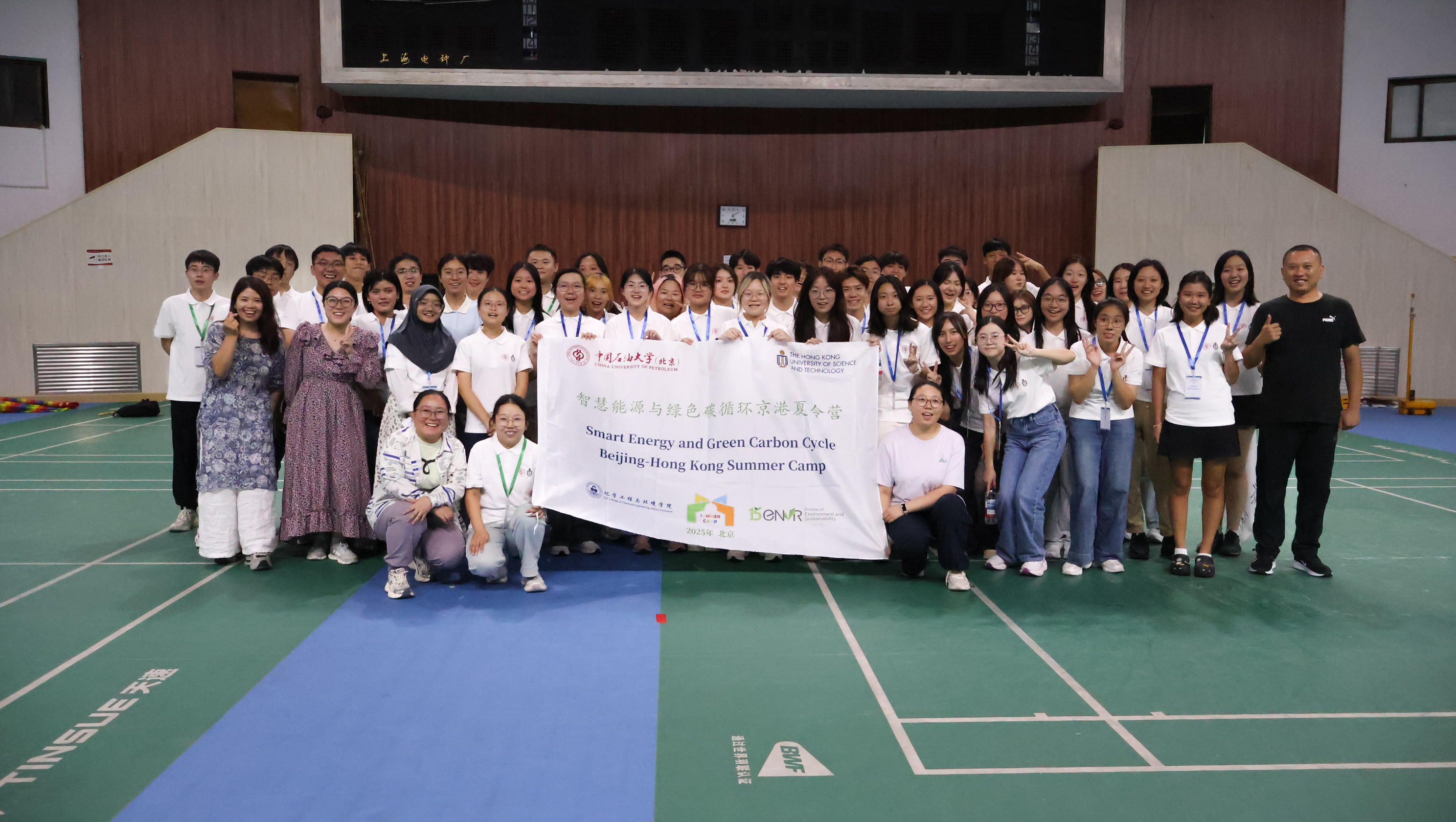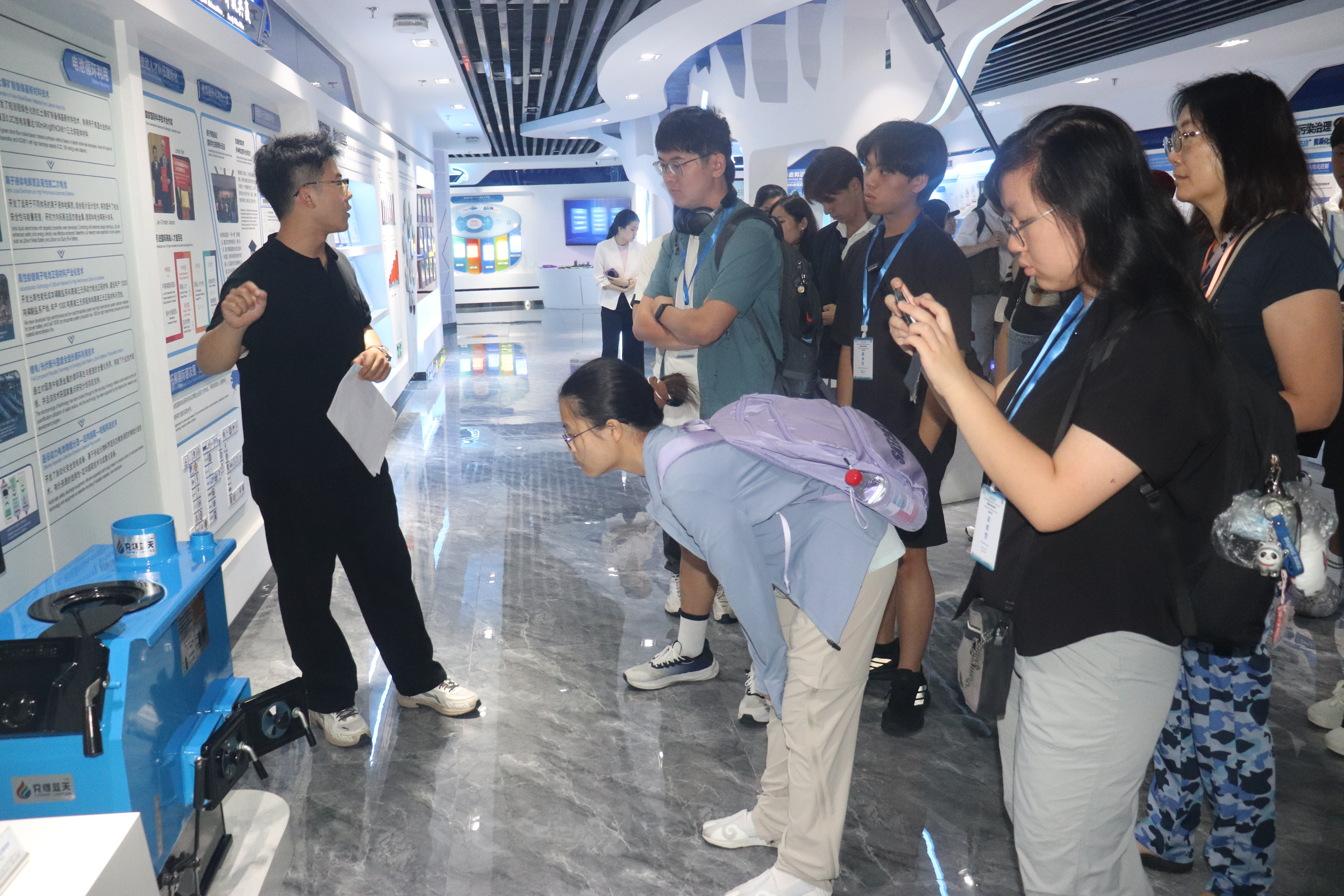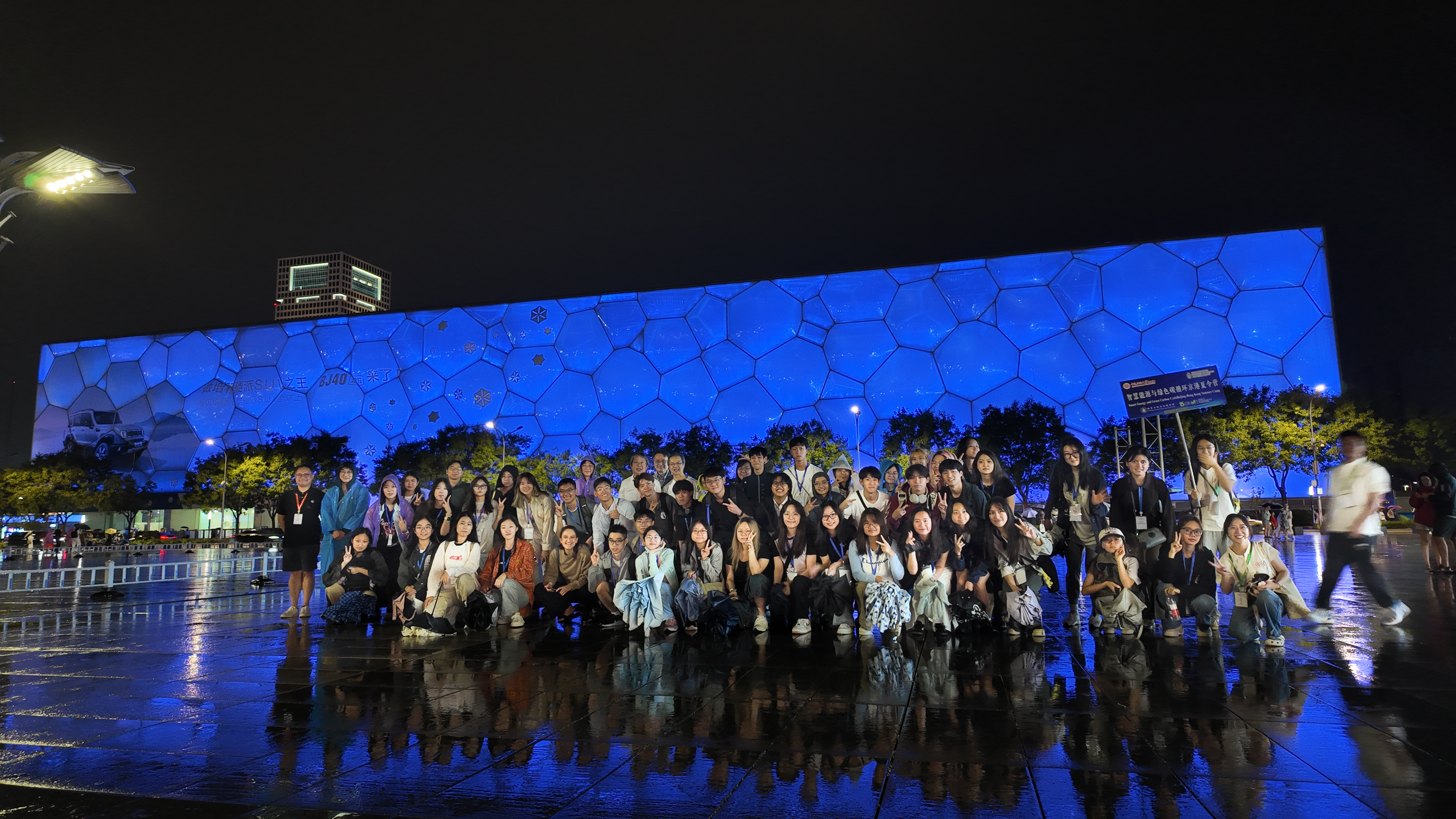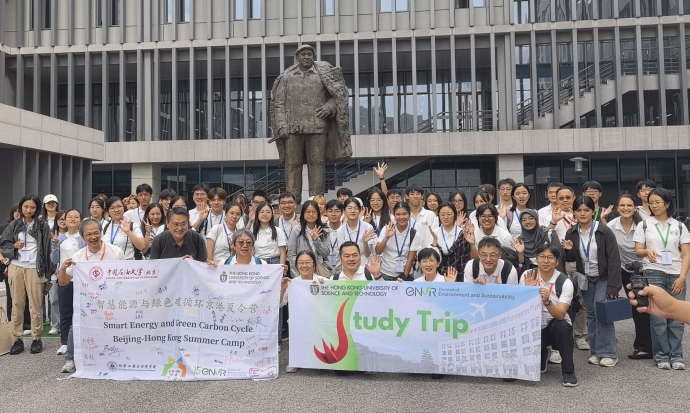
|
|||||||||||||||||||||
|
Post Date: 3 September 2025 EVMT Study Trip 2025: Smart Energy and Green Carbon Cycle Beijing–Hong Kong Summer CampThis year’s EVMT Study Trip, the Smart Energy and Green Carbon Cycle Beijing–Hong Kong Summer Camp held from August 23 to 28. Nearly 60 participants, including EVMT freshmen, fellow students, and faculty members, joined a six-day journey of learning and exploration in Beijing. It was a precious opportunity for our students to gain hands-on experiences and learn beyond the classroom. Over the six days, the group travelled through ancient, modern, and future China. We climbed the Great Wall, walked through the Ming Tombs, visited cutting-edge laboratories, pilot plants, mega-malls, hydrogen stations, and the hidden systems of waste-to-energy and waste treatment. At each stop, we reflected on how societies succeed, decline, and adapt — echoing the themes in Yuval Harari’s Sapiens and Jared Diamond’s Collapse and Upheaval: the choices societies make, and how those choices determine whether they thrive or fall behind. View all highlights videos HERE. Part 1. Lessons from History: Walls, Tombs, and FleetsAt the Great Wall, stretching over 21,000 kilometers, we saw one of humanity’s greatest engineering feats. When the Qin dynasty unified the warring states in 221 BCE, it didn’t only build walls. It also standardized writing, weights, currency, and bureaucracy. That gave peasants more stability after centuries of war. For a while, that stability was a blessing.
But stability can also bring complacency. Once the warring states ended, rulers no longer felt pressure to innovate. They relied on the Wall to protect them but forgot that true security requires constant adaptation. Diamond reminds us that societies collapse when they become too rigid, too proud, and stop adjusting. Later, at the Ming Tombs, we walked underground into the palace of the Wanli Emperor. Wanli started building his tomb at 22 years old, finished by 1590, spending what was equivalent to two years of national revenue. At that time, Ming China produced nearly 30% of global GDP, had over 150 million people, and commanded the world’s most advanced navy. Remember Zheng He’s treasure fleets: ships over 120 meters long, 50 meters wide, carrying up to 27,000 sailors. Compare that to Columbus’s Santa María in 1492: just 20–25 meters, fewer than 100 men. Ming China had vastly more power. But after just a few decades, the voyages were stopped, the ships burned, the records destroyed.
Meanwhile, Columbus’s tiny ships launched Europe into the Age of Exploration. Why? Because China turned inward, focusing on palace struggles and symbols of wealth like tombs, rather than exploration and innovation. The lesson: wealth and power do not guarantee the future if priorities are misplaced. Harari tells us humans succeed because we can collaborate flexibly in large numbers. But if collaboration is directed toward monuments rather than progress, decline follows. Part 2. Modern Transformation: Social Collaboration and Political WillFast-forward to 2008. At the Bird’s Nest and Water Cube, we remembered the Beijing Olympics. Many said it was impossible to deliver blue skies in Beijing. But China had promised a “Green Olympics” back in its 2001 bid. That story became a matter of national pride.
What followed was an extraordinary example of social collaboration. Government, industry, and citizens worked together:
The results? Nitrogen dioxide levels dropped by 43%. During the 16-day Olympics and the 12-day Paralympics, every single day was classified as “good” or “excellent” air quality. Some critics said, “This was only for a few weeks.” But then came the Shanghai Expo 2010. For six months, air quality stayed at record highs. Compared to the year before, SO₂ dropped by 27.6%, NO₂ by 8.9%, PM₁₀ by 13.9%. Shanghai kept running, businesses stayed open, and millions visited the Expo. This proved: clean air and growth can coexist. What made this possible? Not just technology, but political will. Once leaders made it a priority, once it became a national story, society collaborated flexibly in large numbers to achieve it. And it didn’t stop there. From 2013 onwards came the Air Ten Plan, the Water Ten in 2015, the Soil Ten in 2016, and the Blue Sky Defense Plan in 2018. Between 2013 and 2019, PM2.5 levels fell by about 34% nationwide — one of the fastest improvements anywhere in the world. The lesson: political will plus social collaboration can turn what seems impossible into reality. Part 3. Why We Visited CUP: Petroleum, Materials, and the Green Revolution
Some of you may have asked: Why are students of environment and sustainability visiting a petroleum university? Isn’t petroleum the problem? The reality is this: today, about 82% of global energy still comes from fossil fuels. We cannot just switch them off tomorrow. The transition will take decades. While we move forward, we must make the fuels we still use as clean and efficient as possible. That is why China University of Petroleum (CUP)’s State Key Lab of Heavy Oil Research is important: it reduces the environmental impact of one of the dirtiest fuels. But CUP is no longer only about oil. It is also about new materials and processes — the foundations of the green revolution. Think of your phone: the LED screen, the high-resolution camera, the rare-earth magnets. None of these jumped straight from the lab into your hands. They were tested, scaled, and proven. Without new materials, there would be no solar panels, no batteries, no wind turbines, no hydrogen fuel cells. China cannot rely forever on imports. To succeed, it must learn, innovate, and produce locally and efficiently. CUP is part of that story. And our visit linked perfectly to the Langfang Pilot Site, where new materials are scaled step by step: 10 tons, 100 tons, 1,000 tons, up to 100,000 tons. Test, refine, repeat. Only then can a new technology enter the market. The lesson: sustainability is not just about slogans. It is about rigorous science, systematic testing, and scaling up ideas until they can change the real world. Part 4. Data and Technology: Respect for Science Builds the Green EconomyAt the Institute of Process Engineering and at SDL Technology, we saw how respect for data and science drives both environmental progress and economic growth. China’s air-quality network has more than 1,500 stations nationwide. That data proved that PM₂.₅ fell by one-third. But it also created business: once governments, provinces, cities, counties, factories, and even households demanded trusted data, companies like SDL grew exponentially. Environmental regulation created markets, and markets built a green economy.
On the fourth day at iFlytek, we saw how AI and data are now the nervous system of sustainability. AI can cut building energy use by 10–20%, reduce congestion emissions by 15–30%, and manage complexity at scales humans can’t. Data has become the root of everything. The message: respect for science and data not only solves environmental problems — it also drives innovation and industry.
Part 5. Visions of the Future: Hydrogen and Global Competition
On the fifth day at the Daxing Hydrogen Energy Center, we stepped into a vision of the future. Hydrogen can act as storage for renewable energy. Excess solar at noon or wind at night can split water, producing hydrogen for later use in buses, trucks, or steel mills. Daxing hosts the largest hydrogen refueling station in the world, serving up to 600 vehicles a day. China plans 1,000 stations and 50,000 hydrogen vehicles by 2025. By 2035, hydrogen could make up 10% of the national energy mix. But hydrogen is also difficult: it leaks, it corrodes, it makes metals brittle. That is why the research competition is so fierce. Japan, Korea, Europe, the US, and China are racing for dominance. And as Harari and Diamond remind us, whoever adapts and masters new technology will shape the future. The green transition is not just environmental — it is geopolitical. Part 6. Hidden Foundations: Waste, Water, and Everyday SystemsOn our last day, instead of JingshanPark and Beihai Park, we visited a waste-to-energy incineration plant and a waste treatment facility. These may not be glamorous, but they are the backbone of modern cities. The incinerator reduces waste volume by 90% and generates electricity. The waste plant ensures safe treatment of hazardous waste. Without them, no city can function.
And remember the small things too: the canteen’s smart trays reducing food waste by charging per dish, and the mega-mall that showed us both the scale of China’s consumption and the opportunities for efficiency. Closing Reflection: Dual Carbon and Your Future
Now, China has set its most ambitious goal yet: the Dual Carbon pledge — peak emissions before 2030, carbon neutrality by 2060. Some say it is impossible. But in just over a decade, China has already rewritten the global story on electric vehicles, solar panels, and renewable deployment. With political will, social collaboration, and respect for science and data, what seems impossible can become reality. Prof. Alexis LAU, Tang Junyuan Professor of Environmental Science, Head & Chair Professor of the Division of Environment and Sustainability (ENVR) remarked, “For your future careers, align yourselves with this direction. The green transition is not just about saving the planet. It is about shaping the economy of the future, and even the geopolitics of the future. That is where the opportunities will be.” As Harari tells us humans succeed because we can collaborate flexibly in large numbers base on their collective myths (stories). Diamond tells us societies survive or collapse based on whether they can modify their collaborative stories to adapt for changing challenges. On this trip, our students experienced both the stories and the systems, the history and the future. The challenge now is to carry those lessons forward, keep eyes open, and use them to build a sustainable future — for Hong Kong, for China, and for the world.
Prof. Alexis LAU, together with EVMT students, were interviewed by China Education Television to share their experiences from this study trip. Watch online: https://m.cetv.cn/xinwen/p/560334.html PhotosClick thumbnails for high resolution pictures
|
|||||||||||||||||||||
| Date | : | 23 Aug 2025 (Saturday) - 28 Aug 2025 (Thursday) |

